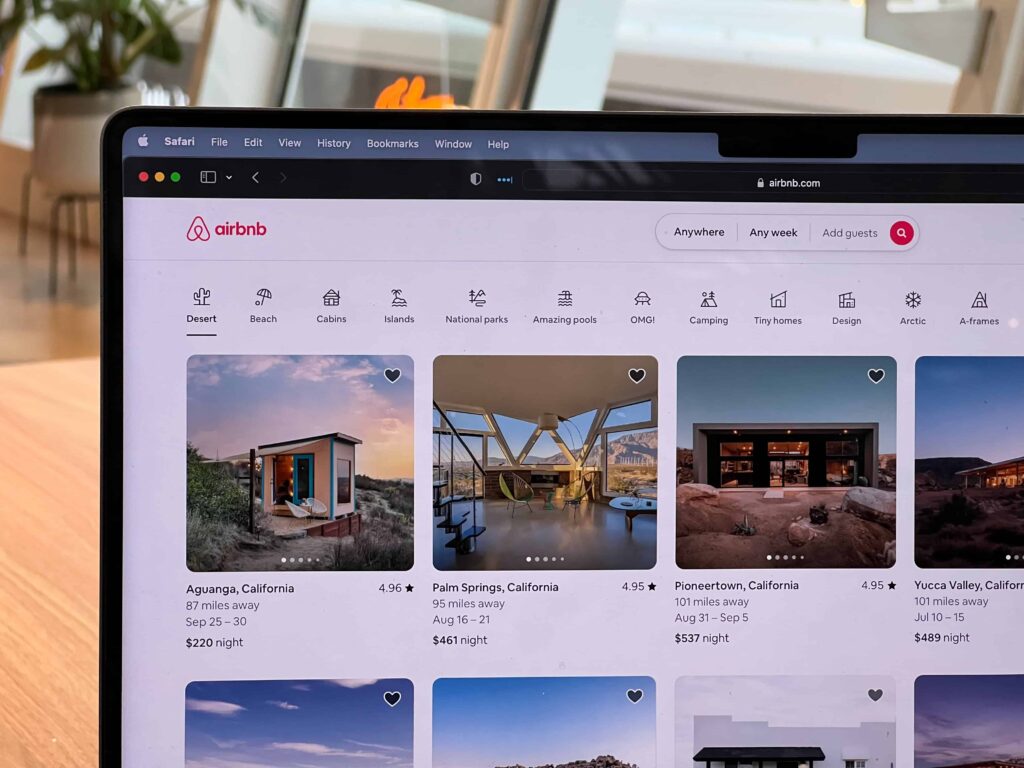The Complete Guide To Your Minimum Viable Product (MVP)
Starting a business by creating a minimum viable product (MVP) is a widely used method for launching startups. Companies such as Uber, Dropbox and Slack all began their journey to success by testing their business models with MVPs.
In this article, we’ll remind you about MVPs, explore options beyond them, and discuss new ways to discover and validate business ideas.
If you’re more of a watcher than a reader, check out this great video about MVPs.
What is a Minimum Viable Product?
A Minimum Viable Product (MVP) is a simplified version of a product that allows a startup to test its business idea with minimal resources and gather valuable feedback from early users.

What’s The Benefit of Developing a Minimum Viable Product (MVP)?
While I’d definitely recommend validating your product idea before spending the time and money developing an MVP, a Minimum Viable Product can be incredibly useful for your business. In my experience, an MVP lets you:
- Get To Market Quickly: Accelerate your product’s entry into the market by releasing a basic version promptly.
- Test Real User Interaction: Gather feedback and insights from actual users to understand how they interact with your product.
- Minimize Development Costs: Save on development expenses by focusing on essential features, avoiding unnecessary complexity.
- Learn Market Preferences: Understand what resonates with your target audience and adapt your product based on their preferences.
Disadvantages of a Minimum Viable Product?
While Minimum Viable Products (MVPs) offer several advantages, it’s important to be aware of potential drawbacks and considerations:
- Incomplete user experience: An MVP may not provide a comprehensive user experience, potentially leading to negative customer feedback
- Limited scalability: MVPs, designed to be simple and quick to develop, may lack scalability and adaptability to market changes. They might not handle large-scale usage or incorporate new features easily
- Limited marketability: MVPs may have limited appeal to a subset of customers, reducing their overall marketability. Early adopters may tolerate an incomplete product, but broader customer segments often expect a fully-featured and polished offering from the start
- Additional development and investment: MVPs frequently require further development and investment to evolve into fully-featured products
- No immediate revenue: MVPs may not generate immediate revenue, as early adopters may be unwilling to pay for an incomplete product
How To Build a Minimum Viable Product (MVP)
Creating an MVP for your project involves strategic steps. While I’ve covered the exact steps to building an MVP in this article, here’s a simplified guide:
- Align with Business Goals:
- Ensure your planned MVP matches your team’s or company’s strategic objectives. Consider factors like revenue targets and resource limitations to decide if it’s the right time to develop an MVP.
- Identify Specific Solutions:
- Align your MVP plans with business objectives and identify specific problems or improvements for your user persona. Focus on small subsets of your product’s vision and base decisions on user research, competitive analysis, and feedback iteration speed.
- Translate into Development Plan:
- Translate chosen functionality into a development action plan. Keep in mind the “V” in MVP—ensure the product is viable, allowing users to complete tasks with a high-quality experience and positioning it for potential sales.
Examples of MVPs

To illustrate how brands have successfully launched MVPs, here are a couple of examples:
- Airbnb: When the founders of Airbnb had limited funds to build a business, they used their own apartment to validate their idea of creating a platform for short-term, peer-to-peer rental housing online. They developed a minimalist website and posted photos and details about their property. Almost immediately, they attracted several paying guests who validated the concept and proved its potential.
- Foursquare: Foursquare, a location-based social network, started with a one-feature MVP centred around check-ins and gamification rewards. The development team gradually added additional features such as recommendations and city guides as they validated the idea with an enthusiastic and growing user base.
Minimum Viable Product Template
This Minimum Viable Product (MVP) Template provides entrepreneurs with a structured approach to product development and business strategy.
Frequently Asked Questions
What is an MVP?
A minimum viable product (MVP) is a product that incorporates sufficient features to attract early-adopter customers and validate a product idea in the early stages of development. This concept is particularly relevant in industries like software, where an MVP enables the product team to gather user feedback promptly, facilitating iterative improvements to the product.
What is the MVP Methodology?
For startups seeking feedback, the Minimum Viable Product (MVP) methodology is valuable. It involves delivering a product with minimal features, and addressing key problems to gather feedback for future improvements. Unlike addressing all problems at once, the focus is on solving the most crucial ones, maximizing learning while minimizing development costs.
The term “minimum” doesn’t mean the product lacks value. Instead, it emphasizes prioritizing core functionality to tackle market problems, with other features considered as “nice to have.”
What is A Minimum Viable Product (MVP) In Agile?
An MVP, which stands for Minimum Viable Product, refers to a product that includes sufficient features to attract early-adopter customers and validate a product idea during the initial stages of development.
This approach is particularly valuable in industries like software, as an MVP allows the product team to swiftly gather user feedback, enabling rapid iteration and improvement of the product.
What is a Minimum Viable Product (MVP) SAFe?
When analyzing an epic, one crucial aspect is defining the Minimum Viable Product (MVP) associated with it. Within the SAFe (Scaled Agile Framework) context, an MVP refers to an initial and stripped-down version of a new product or business solution.
The purpose of the MVP is to validate or invalidate the hypothesis underlying the epic. By developing and releasing the MVP, the team can gather feedback and data to assess whether the epic’s hypothesis holds true or needs adjustment. This iterative approach helps drive informed decision-making and reduces risks associated with developing extensive functionalities upfront.
Which Two Aspects of a Product Do Minimum Viable Products (MVPs) Test?
The Minimum Viable Product (MVP) encompasses three distinct features. Firstly, it includes enough features for consumers to make a purchase, making it marketable and appealing to potential customers. Secondly, it incorporates a feedback mechanism that enables users to provide their valuable feedback on the product. This feedback mechanism facilitates gathering insights and suggestions for product improvement from the user community.
Key Takeaways
- Minimum Viable Product (MVP) Defined: An MVP is a simplified version of a product that allows startups to test ideas with minimal resources and gain rapid user feedback.
- Benefits of Developing an MVP: Accelerate market entry, test user interaction, minimize costs, and learn market preferences.
- Disadvantages and Considerations of MVPs: May provide incomplete user experience, lack scalability, have limited market appeal, require additional development, and may not generate immediate revenue.
- Building a Minimum Viable Product (MVP): Align with business goals, identify specific solutions, and translate into a development plan.
- Examples of Successful MVPs: Airbnb validated its short-term rental concept with a minimalist website, while Foursquare started with check-ins and gradually added features based on user validation.
Overview
By embracing the MVP approach, you can minimize the risk of investing resources in a product that may not meet market needs. Instead, you focus on delivering a valuable solution that resonates with your target audience, increases customer satisfaction, and drives business growth.
So, embark on your MVP journey, iterate, learn, and optimize. Your MVP is not the final destination but a stepping stone towards a successful and impactful product. Embrace the power of the Minimum Viable Product, and let it guide you on your path to innovation and success.
Once you’ve created your first viable product, you should look into creating a product that your target market will love, which you can do by reading here.
As you embark on this journey, check out our guide to validating your startup idea and everything you need to know about bootstrapping your startup.







